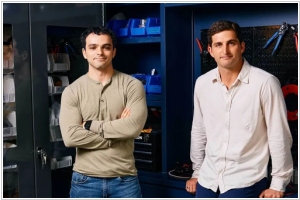Commonwealth Fusion vs Helion Energy
September 28, 2025
Commonwealth Fusion ($2.9B)
Commonwealth Fusion Systems is collaborating with MIT to create SPARC - the world's first fusion device that produces plasma that generates more energy than consumes. This compact, high-field tokamak will be built using high-temperature superconducting (HTS) magnets. CFS technology uses the new superconductor Rare Earth Barium Copper Oxide (REBCO) to produce the most powerful and most compact fusion magnets. Once SPARC is built, the company plans to build the world's first fusion power plant capable of generating hundreds of megawatts of power. CFS research is funded by the U.S. Department of Energy.
Helion Energy ($1B)
Helion Energy uses fusion energy to provide pure, safe electricity. Helion's fusion generator elevates fusion (Deuterium and helium-3) fuel to temperatures greater than 100 million degrees Celsius to achieve plasma conditions and directly obtains electricity with a high-efficiency pulsed approach. Magnets confine the plasma in a Field Reversed Configuration (FRC) and speed up two FRCs to 1 million mph from opposite ends of the generator. When the FRCs collide in the center of the system, they are further compressed by a strong magnetic field until they reach fusion temperatures greater than 100 million degrees Celsius (9 keV). At this temperature, the deuterium and helium-3 ions are moving fast enough to surpass the forces that would otherwise keep them apart, and they fuse. This emits more energy than is consumed by the fusion process. As new fusion energy is generated, the plasma enlarges.
See also:
Top 33 Fusion Energy startups
Top 33 Fusion Energy startups
Commonwealth Fusion Systems and Helion Energy are both American startups aiming to realize commercial thermonuclear fusion to generate cheap, clean and virtually unlimited energy. They are focusing on compact reactors instead of huge (government-funded) facilities like ITER. Both use magnetic plasma confinement (albeit with different approaches), employ new materials and high-temperature superconductors and aim to launch the first commercial facility in the 2030s.
But Commonwealth Fusion Systems (founded in 2018) is a spinoff of the Massachusetts Institute of Technology (MIT), which has received backing from companies such as Bill Gates' Breakthrough Energy and Google. It is relying on the classic tokamak design, but with new, powerful high-temperature superconductor magnets.
Helion Energy (2013) uses a Field-Reversed Configuration mechanism to directly compress plasma and convert its energy into electricity without turbines. Their reactor Polaris compresses and collides two plasma rings which results in a magnetic pulse, inducing electric current in a circuit. The company plans to use Deuterium-He3 fuel (meaning it will require Helium-3 mining on the moon). Helion Energy has received significant investment from OpenAI CEO Sam Altman.
But Commonwealth Fusion Systems (founded in 2018) is a spinoff of the Massachusetts Institute of Technology (MIT), which has received backing from companies such as Bill Gates' Breakthrough Energy and Google. It is relying on the classic tokamak design, but with new, powerful high-temperature superconductor magnets.
Helion Energy (2013) uses a Field-Reversed Configuration mechanism to directly compress plasma and convert its energy into electricity without turbines. Their reactor Polaris compresses and collides two plasma rings which results in a magnetic pulse, inducing electric current in a circuit. The company plans to use Deuterium-He3 fuel (meaning it will require Helium-3 mining on the moon). Helion Energy has received significant investment from OpenAI CEO Sam Altman.
★
See also:







